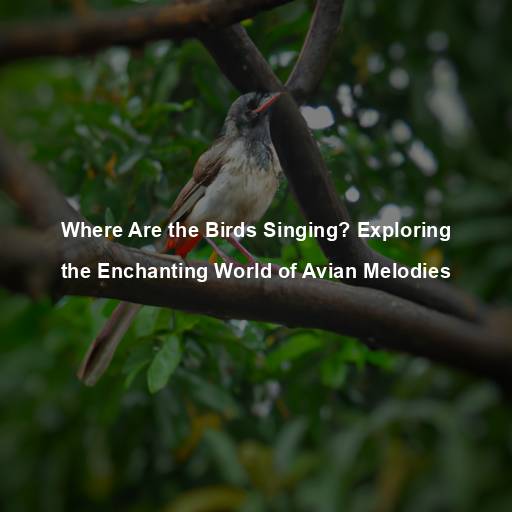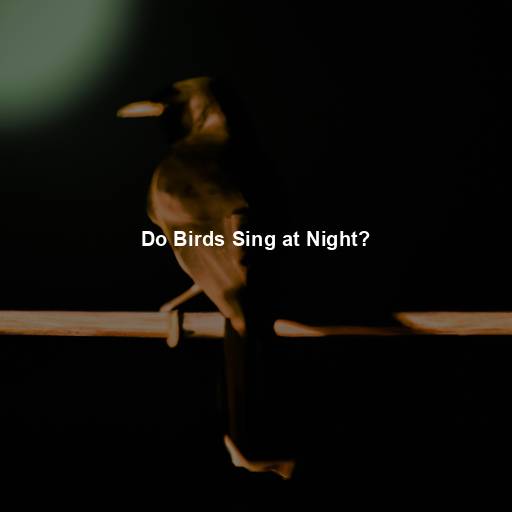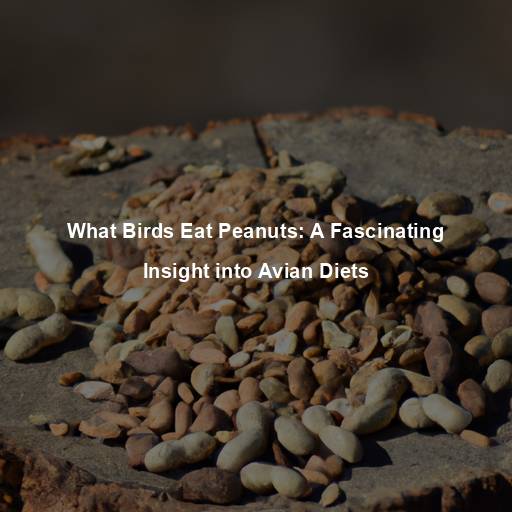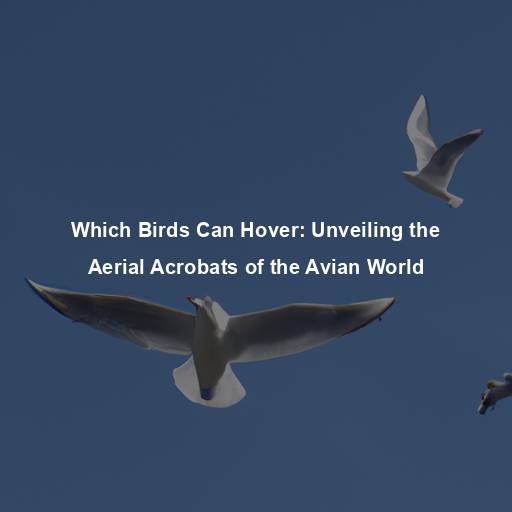Where Are the Birds Singing? Exploring the Enchanting World of Avian Melodies
Last Updated on July 10, 2023 by Evan
Contents
- 1 The Enigmatic Call of the Avian Chorus
- 1.1 Unveiling the Language of Birds
- 1.2 The Melodies of Love: Courtship and Mating
- 1.3 Navigating the Soundscape: Territory and Defense
- 1.4 A Melodic Alarm: Warning Calls and Predators
- 1.5 Nature’s Symphony: The Dawn Chorus
- 1.6 The Evolutionary Origins of Birdsong
- 1.7 The Power of Birds: Their Impact on Human Culture
- 1.8 Preserving the Avian Symphony: Conservation Efforts
- 1.9 Regional Dialects: The Language of Birds
- 1.10 Improvise Like a Bird: Improvisational Elements in Songs
- 1.11 The Musical Toolbox: Elements of Birdsongs
- 1.12 The Science Behind the Melodies
- 1.13 The Healing Power of Birdsong
- 2 FAQs for “Where are the Birds Singing?”
The Enigmatic Call of the Avian Chorus
Birdsong has long captivated human hearts with its ethereal beauty and enchanting melodies. From the delicate trills of a nightingale to the vibrant chirps of a cardinal, the avian chorus fills our world with a symphony of sounds. But have you ever wondered why birds sing? What purpose does their melodic language serve?
Unveiling the Language of Birds
Birdsong is much more than a mere auditory pleasure; it serves a vital role in the avian world. Birds communicate through intricate melodies, each note conveying a distinct message. From attracting a mate to defending their territory, birds use their songs to navigate the complexities of their lives. Understanding the language of birdsong allows us to glimpse into their vibrant world, filled with rituals, courtship, and territorial disputes.
The Melodies of Love: Courtship and Mating
In the whimsical world of avian romantics, the art of song takes center stage in the drama of courtship and mating. Feathered suitors, adorned with vibrant plumage, serenade potential mates with a symphony of melodies that embody their strength and virility. Each bird strives to outshine its competitors, creating a competitive chorus of enchantment. The harmonious complexity and bewitching beauty of these melodies play a pivotal role in capturing the heart of a discerning female, ultimately shaping the destiny of a lifelong partnership.
Birdsong also plays a crucial role in defining and defending territories. Each bird has its own unique song, allowing them to establish their presence and ward off intruders. The strength and clarity of a bird’s song can determine the boundaries of their domain, ensuring the safety of their nesting sites and access to vital resources. Through their melodic declarations, birds engage in sonic battles, asserting their dominance and protecting their patch of the sky.
A Melodic Alarm: Warning Calls and Predators
When the sun rises and the world wakes up, the melodious symphony of birdsong fills the air. Beyond just being a charming chorus, these avian maestros are actually engaging in a fascinating form of communication. They have perfected the art of exchanging messages through a complex system of warning calls. These cautionary cries serve as an alarm system, alerting their feathered friends to potential dangers that lurk in the shadows.
Nature’s Symphony: The Dawn Chorus
There’s something utterly mesmerizing about the way nature unfolds its grand symphony every morning. As if scripted by the heavens, the first glimmers of daylight set off a crescendo of birdsong that leaves us in awe. This daily marvel reminds us that the boundaries between species blur when it comes to celebrating the break of dawn. Beyond mere communication, the dawn chorus weaves a tapestry of camaraderie among our feathered friends, knitting their social fabric tighter with each melodious note.
The Evolutionary Origins of Birdsong
In the realm of nature’s symphony, the ethereal melodies of birdsong have captivated our imagination for eons. A dazzling tapestry weaved intricately by the hands of evolution, this mesmerizing phenomenon traces its enigmatic origins back to the dawn of avian existence. As the feathers of time fluttered, the melodious strains unfolded as a testament to the grandeur of sexual selection and the complexities of social dynamics. With each passing moment, birds morphed their vocal prowess, fashioning a captivating symphony that enchants and bewilders us to this day.
The Power of Birds: Their Impact on Human Culture
Birds and their melodious songs have left an indelible mark on human culture throughout history. From ancient folklore to classical symphonies, birds have inspired countless artists, poets, and musicians. Their songs evoke a sense of wonder, freedom, and transcendence, connecting us to the natural world in profound ways. Birdwatching, an activity enjoyed by millions worldwide, allows us to witness the magic of birdsong firsthand and forge a deeper connection with these magnificent creatures.
Preserving the Avian Symphony: Conservation Efforts
Step into the captivating realm of bird melodies, where an intricate symphony flourishes amidst a cascade of challenges. From vanishing habitats to relentless climate shifts, the delicate balance of avian ecosystems shudders under the weight of human activities. Yet, amid this tale of uncertainty, a glimmer of hope emerges as conservation efforts ignite across the globe. With protected areas taking shape and a growing movement focused on raising awareness, the goal to preserve the enchanting chorus of birdsong for future generations flickers, urging us to harmonize with nature’s unrivaled melodies.
- Ensuring the availability of suitable nesting sites.
- Minimizing the use of pesticides and harmful chemicals.
- Promoting sustainable land management practices.
- Encouraging the planting of native trees and plants to provide food and shelter for birds.
- Supporting research and monitoring programs to better understand bird populations and their needs.
- Educating the public about the importance of birds and their habitats.
Imagine being the editor of a prestigious magazine, shaping the very essence of its content. With each word carefully chosen, every sentence crafted to captivate readers with bursts of unexpected brilliance. As the pages come alive with perplexing tales and thought-provoking narratives, the magazine becomes a treasure trove of unique perspectives and captivating stories, leaving readers yearning for more.
Calling all bird enthusiasts! Get ready to plunge into the mesmerizing world of North American birds with the National Audubon Society. Immerse yourself in an enchanting exploration of avian wonders, where every turn of the page reveals a stunning array of feathered creatures in all their glory. From the majestic Bald Eagle to the vibrant Western Tanager, step into a realm of awe-inspiring beauty, intricate plumage, and fascinating behaviors that will leave you captivated and yearning for more.
2. Sibley, D. A. (2003). The Sibley Field Guide to Birds of Eastern North America.
Prepare to be captivated by the enchanting world of birdsongs! In the acclaimed book “Nature’s Music: The Science of Birdsong,” authors Peter Marler and Hans Slabbekoorn delve into the mesmerizing realm of avian vocalizations. Embarking on a journey through the rich tapestry of bird songs, this groundbreaking exploration reveals the intricate variations and astonishing complexities that make these melodies a true testament to the wonders of nature. Bursting with fascinating insights and perplexing phenomena, “Nature’s Music” is a must-read for anyone seeking to unlock the secrets of our feathered friends’ melodic repertoire.
While birdsongs serve various purposes, it’s important to note that not all avian melodies are the same. Different bird species have their own unique vocalizations, each with its distinct patterns, pitches, and rhythms. Let’s explore some of the fascinating variations in birdsongs and the factors that contribute to this diversity.
Regional Dialects: The Language of Birds
Birds, much like us humans, boast a captivating diversity in their musical repertoire. Just as accents and dialects shape our identities, these feathered virtuosos too create unique sonic masterpieces tailored to their specific locales. Through a process of avian emulation, melodies and harmonies are shared amongst neighboring birds, gradually evolving into distinct regional dialects that facilitate communication within their own communities. This fascinating phenomenon resonates with the rich social and cultural tapestry woven by birdsong, showcasing the intricate role of learning in its evolutionary symphony.
Improvise Like a Bird: Improvisational Elements in Songs
The melodic world of birds extends far beyond a mere collection of pre-determined tunes. Their enchanting songs are not bound by conventional rules; instead, they possess the magical skill of weaving unscripted melodies, adding unexpected twists to their harmonies that keep us wondering. It is as if they possess an innate ability to compose on the spot, adjusting their sonic narratives to the ever-shifting rhythms of their surroundings. These improvisations are not just random sounds but rather intricate expressions of their artistic souls, displaying their adaptability and intelligence in ways that continually leave us in awe.
The Musical Toolbox: Elements of Birdsongs
Birdsongs, a symphony of complex elements intertwined in a delicate dance, gift us with the mesmerizing melodies of the avian world. Within each heartfelt composition lies a distinctive tapestry, woven with precision and finesse by every feathered troubadour. Harmonizing their chirps, whistles, trills, and warbles, these avian virtuosos orchestrate a symphony that captures our imagination and leaves us in awe of nature’s musical prowess. Delve into the enchanting world of birdsongs, where melody and mystery converge, inviting us to unlock the secrets of the skies.
Phrases and Motifs
The mesmerizing melodies of birdsongs have long captivated our curious minds. These symphonies of nature are crafted with intricate phrases and motifs, woven together in a mysterious dance of sound. From dawn till dusk, the avian virtuosos grace us with their harmonious messages, effortlessly communicating their intentions through the delicate artistry of repetition and variation. Take, for example, the enchanting mockingbird, whose repertoire knows no bounds, effortlessly mimicking the melodies of its feathered companions to create a captivating vocal spectacle filled with wonder and perplexity.
Trills and Whistles
Trills and whistles are common elements found in many birdsongs. Trills are rapid, high-pitched sequences of notes, while whistles are clear, sustained tones. These elements add variety and complexity to the overall melody, creating a rich and vibrant composition.
Calls and Songs
Birds produce different vocalizations, including calls and songs. Calls are short, simple vocalizations used for specific purposes like alarm calls or contact calls. Songs, on the other hand, are more complex and melodious, often used during courtship and territorial displays. The combination of calls and songs allows birds to communicate effectively in various situations.
Rhythmic Patterns
Rhythm plays a crucial role in birdsongs, giving them a distinct musical quality. Some species incorporate rhythmic patterns into their songs, adding a rhythmic structure that enhances the overall composition. These rhythmic patterns can vary from simple repetitions to complex sequences, creating a mesmerizing auditory experience.
The Science Behind the Melodies
The production of birdsongs is a fascinating process that involves intricate biological mechanisms. Understanding the science behind these melodious compositions provides insights into the remarkable abilities of birds and the evolutionary adaptations that have shaped their vocalizations.
Vocal Anatomy
Birds possess specialized vocal organs known as the syrinx, located at the base of their trachea. The syrinx is a complex structure that allows birds to produce a wide range of sounds. By manipulating the airflow and tension of the syrinx muscles, birds can control the pitch, volume, and quality of their vocalizations.
Neural Pathways
The avian world holds an enthralling secret – an enchanting gift bestowed upon birds – their intricate neural pathways, crafted with unparalleled finesse. These complex pathways gift these creatures the surreal ability to learn and mimic the very sounds that grace their surroundings, a musical exchange between generations. It is the songbird community that truly shines amidst this symphonic happening, demonstrating their prowess and finesse as they weave unparalleled melodic tapestries.
Cultural Transmission
Birds, like humans, engage in cultural transmission of their vocalizations. Young birds learn their songs from adult tutors, often their parents or other experienced individuals within their social group. This cultural transmission ensures the preservation and continuity of distinct song dialects within bird populations.
The Healing Power of Birdsong
Birdsongs, more than being mere melodies or modes of communication, possess an intrinsic power that profoundly affects our well-being. Scientific investigations have illuminated their transformative potential, unveiling the therapeutic wonders they can weave. Immerse yourself in their harmonies and discover a refuge from stress, a doorway to improved moods, and a gateway to tranquility. The enchanting solace of birdsong has even ventured into the realm of sound therapy, enhancing healing environments and providing solace to those navigating physical or emotional obstacles.
Step into the enchanting realm of bird songs, where melodies of the nightingale intertwine with rhythmic drumming of the woodpecker. Let yourself be carried away to a world of natural beauty and wonder, as these harmonious tunes mesmerize and captivate. With each captivating note, the intricate connections between humans and the avian world become apparent, reminding us of the profound harmony that exists in nature. So, when nature beckons, pause and immerse yourself in the symphony of birdsong – let its ethereal magic weave its perplexing and uplifting spell upon your spirit.
References:
Bird Song: Biological Themes and Variations, authored by Catchpole and Slater in 2008, offers a captivating exploration of the mesmerizing world of avian vocalizations. This intriguing masterpiece delves into the intricate patterns and remarkable diversity of bird songs, shedding light on the enigmatic relationship between biology and musicality. Bursting with captivating anecdotes and scientific insights, this seminal work stimulates the curious mind, unlocking the mysteries that lie within the vibrant symphony of the avian kingdom.
2. Marler, P., & Slabbekoorn, H. (2004). Nature’s Music: The Science of Birdsong.
In the abyss of nature’s symphony lies the enigmatic realm of soundscape ecology – a burgeoning field that dances on the fringes of scientific understanding. Pijanowski et al. (2011) beckon us into this mysterious domain, where the soundscapes of our planet become a canvas for unraveling the intricate tapestry of ecological relationships. With a deft blend of expertise, the authors introduce us to this emerging science, weaving together captivating threads of knowledge that leave us both transfixed and bewildered.
FAQs for “Where are the Birds Singing?”
Q: Why are there no birds singing around my area?
A: There could be several reasons why you may not hear birds singing in your area. One possibility is that there is a lack of suitable habitat for the birds. Birds require specific types of vegetation, food sources, and nesting areas to thrive. If your area is highly urbanized with little green space or heavily polluted, it may not support a diverse bird population. Additionally, extreme weather conditions or the presence of predators can discourage birds from singing. It is also important to note that different bird species have specific migration patterns, so depending on the time of year, they may have already migrated to another location.
Q: How can I attract birds to my backyard to enjoy their songs?
B: Transform your backyard into a haven for our feathered friends with these transformative tips. Delight their palates with a vibrant array of sustenance by offering an enticing assortment of seeds, nectar, and fruits through purposeful feeders. Embrace nature’s grace by adorning your garden with indigenous trees, shrubs, and blossoms, becoming a serene sanctuary brimming with delectable delights. Quench their thirst for life by introducing a captivating water oasis, a birdbath or pond, ensuring hydration amidst their majestic perches. Cultivate harmony by safeguarding their ecosystem, opting for minimal pesticide usage, preserving their nourishing food sources. Foster their amorous abodes, be it by erecting quaint birdhouses or preserving decaying trees, where spirited avians may orchestrate their melodious symphony.
Q: Why do birds sing in the morning?
A: Birds tend to sing in the morning for several reasons. One primary reason is that during the early hours, the air is generally calmer and less noisy, allowing their songs to carry farther and attract mates or defend territories effectively. Additionally, early mornings are often associated with abundant food availability as insects are more active during this time. Singing serves various purposes for birds, including claiming and defending territories, attracting mates, and asserting dominance. By singing in the morning, birds maximize their chances of being heard and establishing themselves successfully in their environment.
Q: Are there specific locations where birds are more likely to sing?
A: Birds can be found singing in various locations depending on their habitat preferences and needs. In general, open areas with a mixture of trees, shrubs, and grasses tend to support a higher diversity of bird species, making them more likely to sing. Forest edges, parks, gardens, and wetlands are often good places to find singing birds. Additionally, areas with a dense canopy cover or near sources of water such as rivers or lakes can attract specific bird species known for their melodious songs. However, it is important to remember that bird populations and behaviors can differ based on geographical location and environmental factors.
Q: Can listening to birds singing have any benefits for humans?
B: The enchanting melodies of birdsong have long captivated human hearts, but did you know that there are actually several benefits to indulging in these feathered symphonies? A growing body of research suggests that listening to bird songs can work wonders on our mental well-being, acting as a natural stress reliever and anxiety reducer. These calming and melodious tunes have the power to create a serene environment that uplifts our mood and puts us at ease. Moreover, immersing ourselves in the melodies of birds can enhance our focus and attention, especially when we find ourselves in the embrace of mother nature. For enthusiasts, bird songs also offer a window into the presence of specific species and the overall vitality of ecosystems. So, take a moment to savor these avian serenades and embrace the joy and therapeutic effects they bring.







